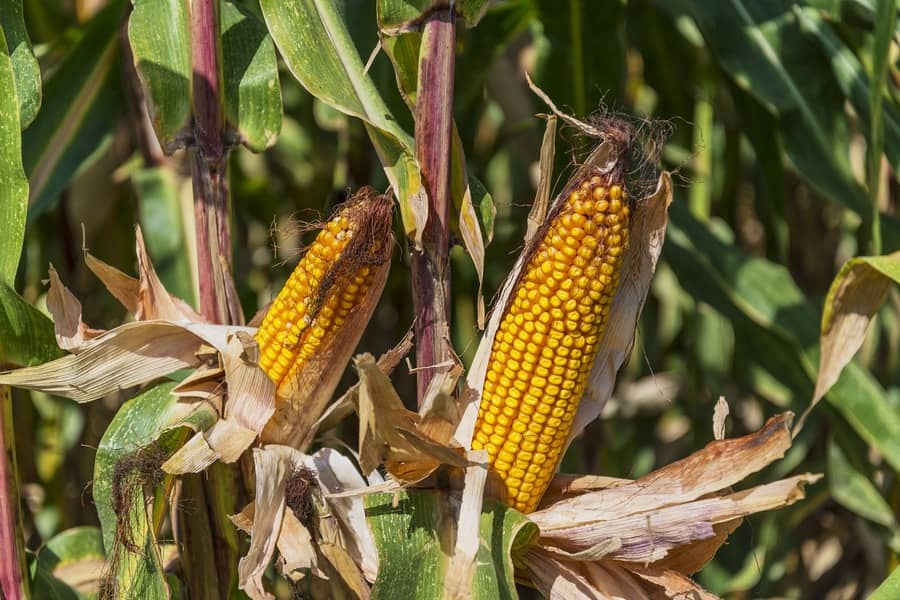Porto Alegre, October 4, 2022 – The September US quarterly stock report is always very important as it sets the carryover for the next business year. There was some tranquility regarding this September 2022 report, as there was no export appeal for US corn at the end of July and August that could cut ending stocks for the 21/22 business year. However, the USDA brought surprises, initially by cutting the size of the 2021 crop and then keeping demand in the industrial sector higher than expected for the 21/22 business year. This will imply an effort to cut again the forecast of future demand, 22/23, to avoid stocks below 30 mln tons and critical supply.
USDA released its September quarterly stock report, which equates to the position of stocks through August 30, hence the carryover stocks from the 21/22 business year to 22/23. The stocks had been projected by USDA at 1.525 bln bushels, or just over 38 mln tons. Not high stocks, but satisfying. The report pointed to 1.377 bln bushels or 35 mln tons, which should not be considered a serious factor either. This cut in the stocks stemmed from the maintenance of good demand in the industrial food sector, with consumption not falling at the rate expected by the Department. Then, the surprising correction of the 2021 US crop from 383.9 to 382.9 mln tons due to a slight cut in the productivity of the previous crop.
However, if this is not a serious point for the short term, it brings for 2023 the worsening of a problematic situation, that is, two crucial points:
– The need to keep demand lower for 22/23;
– The urgent need to motivate the US producer to plant more corn in the 2023 crop as the only possible way to bring the market back to normal in 23/24.
With these initial carryover stocks of 35 mln tons, the 22/23 business year could have stocks of 27 mln tons in the next USDA supply and demand report in October, if there is no demand forecast cut, either domestically or in exports. Stocks below 30 mln tons are seen as critical as they equate to a stock/consumption ratio of only 7.5%, historically very low. As we have reflected in our newsletters, the balance between this demand and exports for the US supply will be achieved with higher prices on the Chicago Board of Trade, that is, this relationship is what could contain demand in the ethanol segment and in exports, in particular. Directly, this picture hampers any more aggressive price low, even during the ongoing US harvest.
Corn prices fell to USD 6.60/6.70 a bushel over the week, but regained momentum after the report. The harvest, of course, is always a good factor in containing this speculative movement. We still have the evaluation of crops in the Midwest, with 12% of the area reaped so far, and practically the entire US crop to reach the market in October.
Another fundamental point is Argentina’s decision regarding the exchange rate. With the special exchange rate created for the soybean complex in September of 200 pesos per dollar, producers focused a lot on selling in this market segment, as it provided an excellent internal liquidation or, at least, in a better way than before. With that, producers halted corn sales, believing that there might also be an expansion, for October, of one “corn dollar.” The government decided not to renew the special currency model for soybeans, and exports are resuming the official exchange rate of 138 pesos/dollar. This should contain new, more aggressive sales in the soybean complex for exports, but it must not quite change the corn context either.
This is because there is little supply slack in the Argentine market, remembering that the new local corn crop only starts to arrive in the market in March. So far, exporters already have 36.2 mln tons of corn purchased in the current business year, already at the limit of government-allowed registrations of 36 mln. We do not think the government will raise these registrations despite the good global demand for Argentine corn. However, certainly, the 22/23 business year suggests a great demand for exports, given the global scenario and the fact that Brazil has supply difficulties in the period from February to June.
Follow the Safras Agency on our website. Also follow us on our Instagram and Twitter and stay on top of the main agribusiness news!
Copyright 2022 – Grupo CMA

